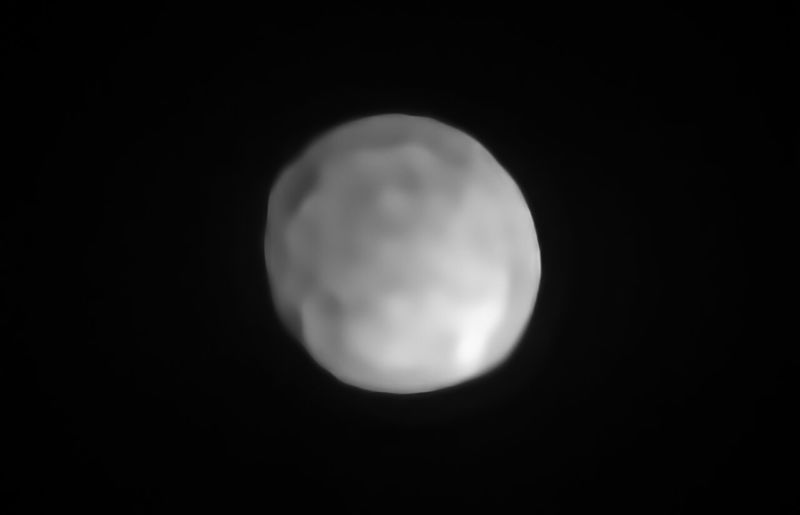Collision liquified the 4th-largest asteroid, turning it into a dwarf planet

Enlarge / Image of Hygiea made using a ground-based telescope. (credit: ESO/P. Vernazza et al./MISTRAL algorithm)
The bodies of our Solar System's asteroid belt have violent pasts. Some, like the dwarf planet Ceres, have seen their interiors restructured under the force of gravity while having their surfaces blasted by collisions. Smaller asteroids have experienced collisions that completely shattered them, leaving their debris' weak gravity to pull the pieces together into a rubble pile. Now, new images of the fourth-largest body in the asteroid belt, Hygiea, suggest it has a history that's somewhere between the two. After suffering a shattering collision in the distant past, the body's remains had enough gravitational pull to shape it into a dwarf planet.
History vs. observationsWe know Hygiea has experienced a collision in the past, because we can see its remains. An entire family of small asteroids are found in orbits that suggest they originated from the asteroid about two billion years ago.
In other cases where we've seen asteroid families like this, the body on which they originated is either pockmarked with craters and/or has suffered at least one extremely large collision. So, planetary scientists probably had similar expectations in mind when they turned the Very Large Telescope at the European Southern Observatory toward Hygiea in 2017.
Read 9 remaining paragraphs | Comments